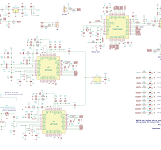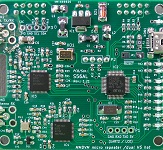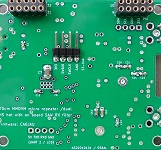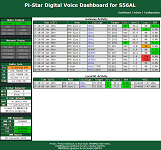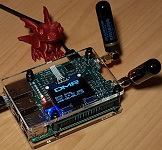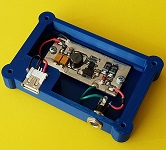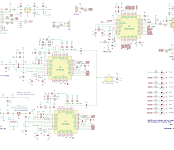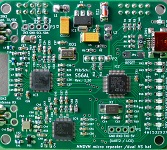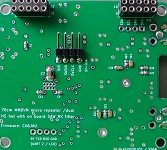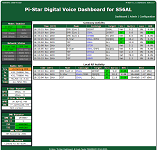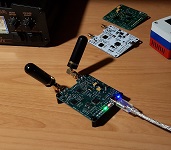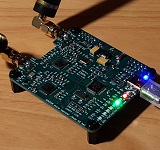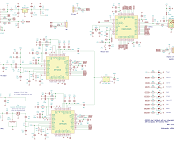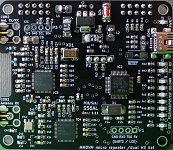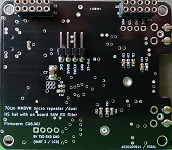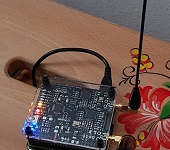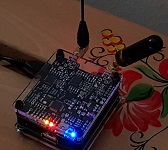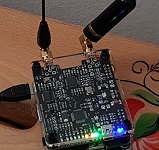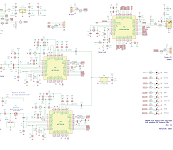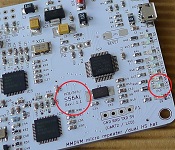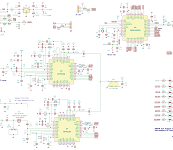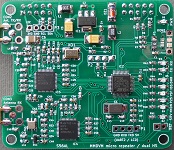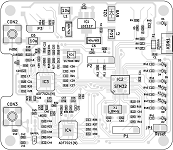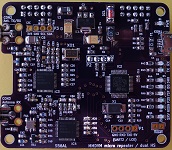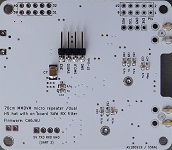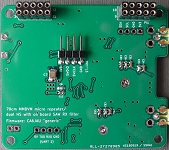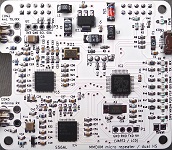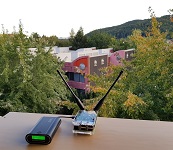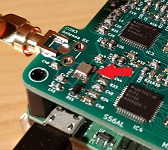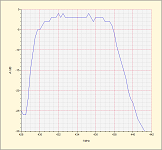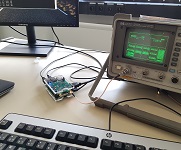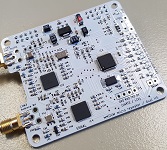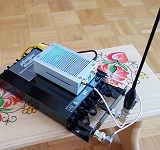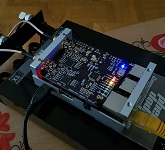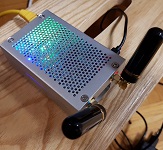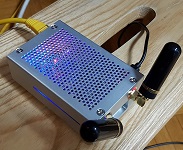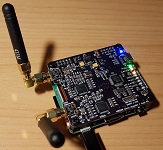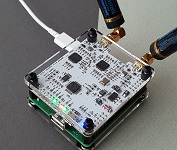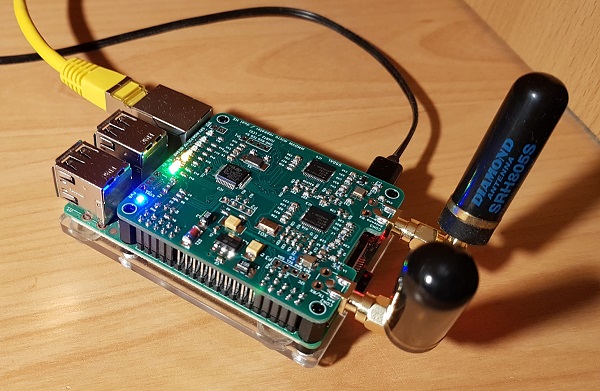 |
MMDVM MicroRepeater / Dual HotSpot hat for RPi
Back to S56AL main page!
Click here if you are interested in a more easy to build simplex HotSpot hat for RPi type B!
Implemented SMD components (R, L, C) of size SMD "0603" with big enough pads for comfortable handsoldering or even accepting "0805" in a case of a necessity! Operates in UHF 70cm band only!
Version 1.0, released in September 2018, integrates an onboard SAW RX filter to improve isolation between RX and TX signal paths as well as increase resistance to strong out of band signals (close Radio or TV broadcasting transmitters) when connecting to a more serious antenna!
Revision 1.20, released in October 2020, introduces a four layer PCB design.
|
This page is about homebrewing an enhanced dual MMDVM HotSpot module for Raspberry Pi - type B.
The MMDVM dual HotSpot (MicroRepeater) board as shown on the photo above has been designed in an attempt to improve the receiver's characteristics of a duplex (dual) HotSpot "hat" built arround two ADF-7021 single chip transceivers and STM32F103 controller.
The board introduces an integrated receiving SAW bandpass filter centered at 432,92 MHz. The 432,92 MHz SAW filters have been originally designed to be used in low power devices which makes them affordable and widely available on the market. As per
measured frequency response curve
the usefull receiving bandpass frequency range extends over 7 to 8 MHz wide. At the same time, with a properly choosen TX / RX duplex frequency pair the isolation of the receiver from the transmitter's signal can be increased by well over 10 dB!
For further information and instructions on programming the neccessary firmware into the STM32F103 microcontroller, please visit the
José Andrés, CA6JAU's GitHub page
as well as his video
(Tutorial instalación ZUMSpot Pi)
at YouTube. The video is highly informational regarding the downloads, compilation, upload and installation of all the necessary software packages to the RPi and HotSpot board, including the
MMDVM software, written by G4KLX
.
Use the "MMDVM_HS_dual_hat" settings in the board selection section of the "Config.h" file for proper firmware compilation.
Revision 1.21 (January, 2021)
Further optimization of the PCB layout: rearrangement of some components, critical for the ADF-7021 (F)PLL subsystem stability,
resulted in an enhanced noise performance as well as further decreased RX BER. In the most popular DMR operation mode RX BER now
stays in a range of 0,2 to 0,3 %, to be just slightly higher for the YSF. The whole system also seems to be less sensitive to
frequency tolerances of the HS's TCXO and/or the transceiver. In the D-Star mode the BER never seemed to be an issue (RX BER = 0%) as long
as the received signal strength and quality remained appropriate.
Revision 1.20 (October, 2020)
The V 1.20 revision introduces a four layer PCB design. Additional (intrinsic) GND and power distribution layers have been added to the existing top and bottom copper layers
to improve isolation as well as crosstalk properties of the board. The (PLL synth. subsystem) noise has been reduced and "BER" properties of the duplex HS design enhanced.
Revision 1.11 (September, 2020)
The "Micro-USB" connector used in previous versions has been replaced by a more durable and mechanicaly stable "Mini-USB" type.
Revision 1.1 (August, 2019)
The revision 1.1 adds a POCSAG LED (D 10) to the board. The reset jumper JP1 (push-button pads) at the top side has been moved closer to the USB socket. The botom side of the board remains unmodified.
Release 1.0 (September 2018)

